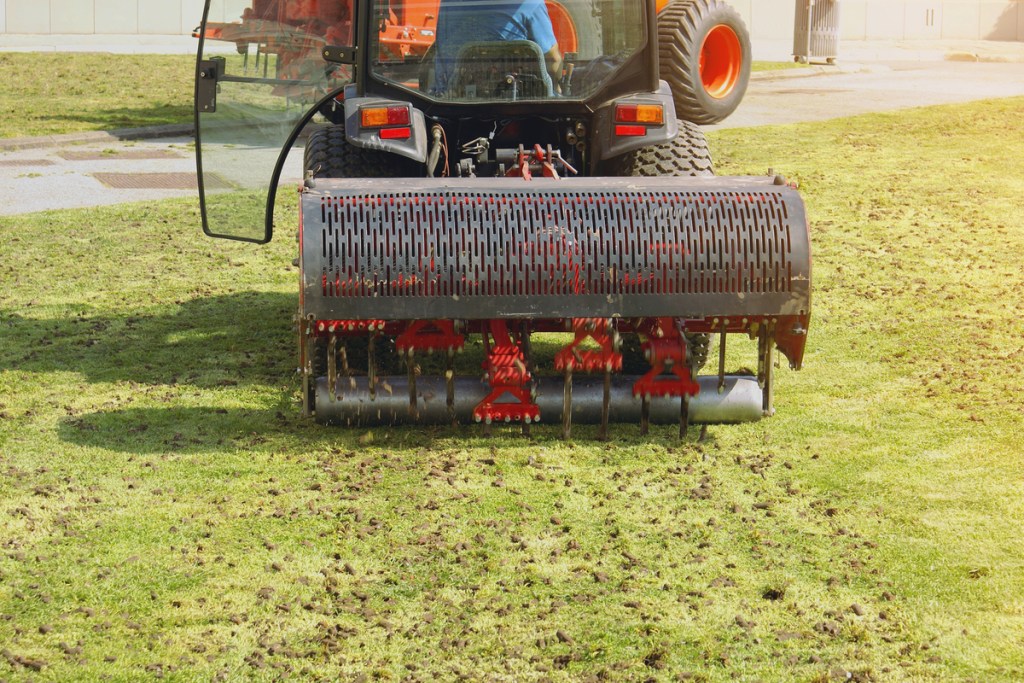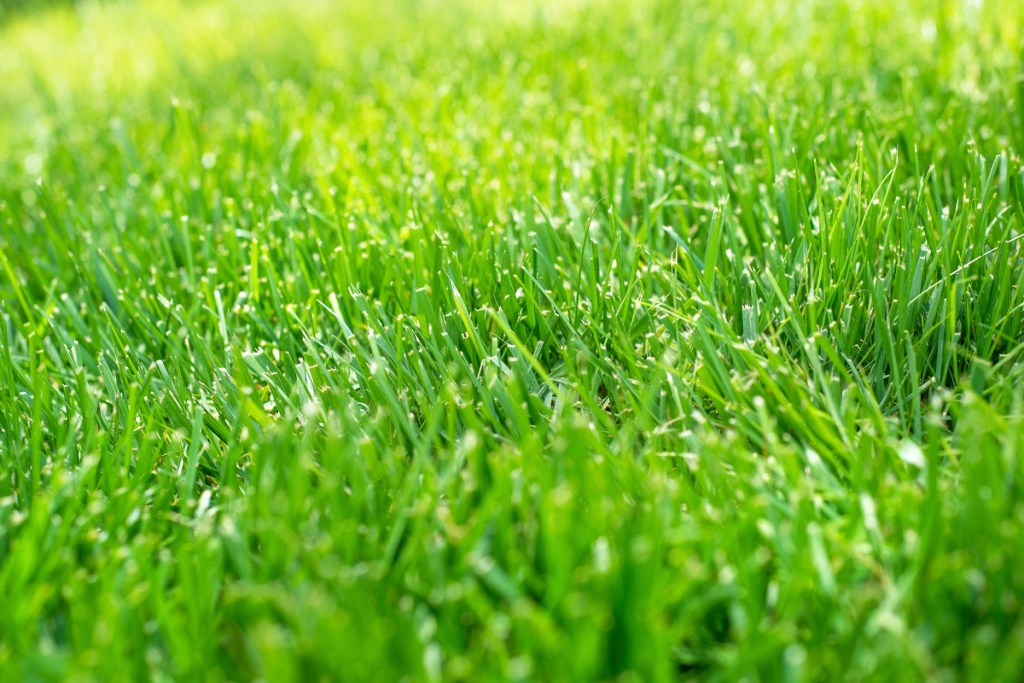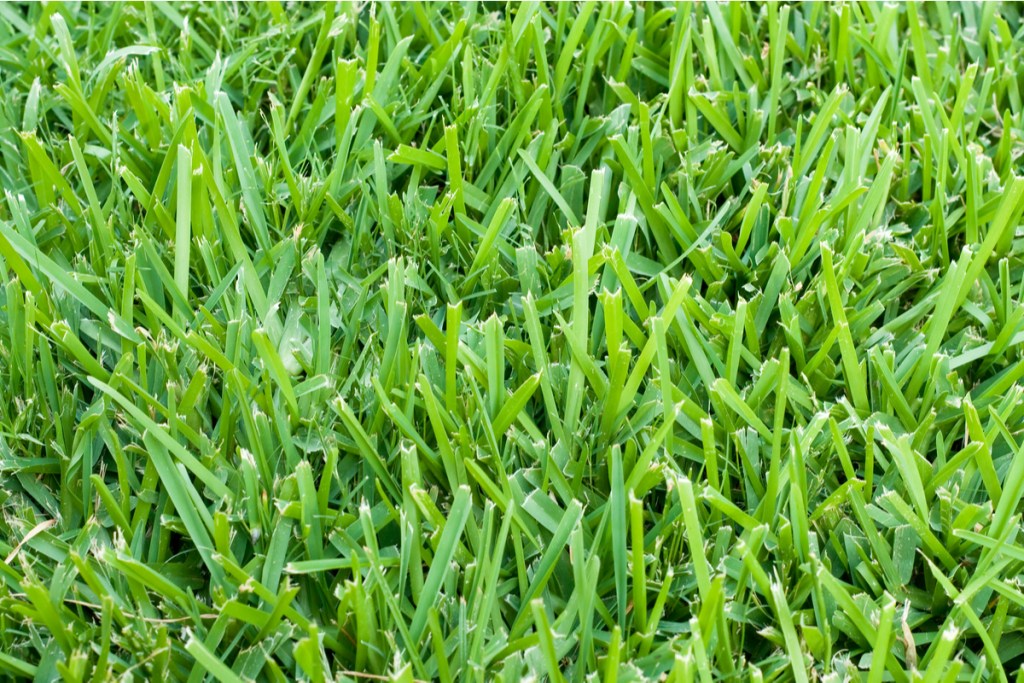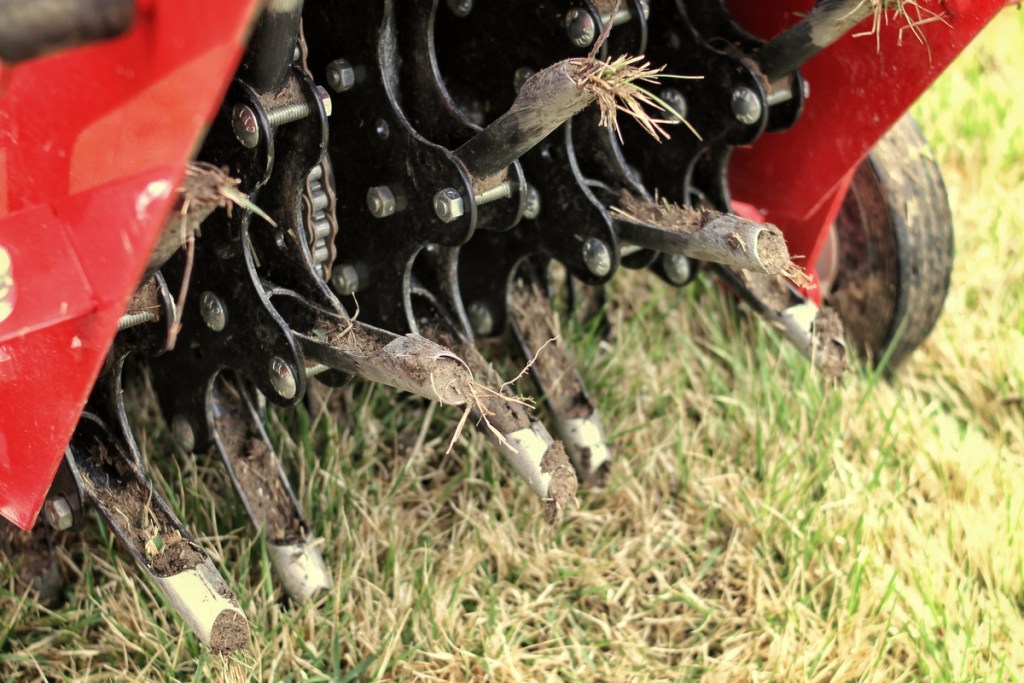Grass does not grow well in compacted soil, as packed earth resists roots, water, and air penetration. It makes a poor environment for beneficial microbes to grow and lacks organic matter, which is a hallmark of fertility. Without intervention, a compacted soil zone can spread as weak grass dies off, roots decay, microbes go dormant or die, and soil particles settle closer to one another. Aerating the lawn helps to reverse these effects and prevent soil from becoming compacted.

What is aeration?
Aeration is, in essence, perforating the soil surface to allow air, water, nutrients, and roots to penetrate deeper. Various tools and implements can be used to do the job, from spiked shoe attachments that you can strap on to walk around the yard to vertical mowers with blades that cut into the soil surface. The most effective aerators are plug aerators.
Plug aerators are heavy rollers with long, hollow tines spaced 6 or 8 inches apart. Some are self-propelled, walk-behind machines. Others are built to tow behind a lawn tractor. As the aerator rolls across the grass, the tines sink down and pull out soil plugs approximately a half-inch in diameter and 1 to 2 inches deep. The plugs are left on the lawn surface to dissolve in the rain.
Aerating can turn a struggling lawn around. Since grass roots are cut in the process, it is a stressor in the short term. If the soil isn’t compacted, aerating isn’t necessary. However, if the lawn needs to be aerated, be sure to do it at the right time of year to minimize plant stress and maximize the benefits.

Causes of soil compaction
Heavy clay soil
Heavy clay soil has a natural tendency to become compacted over time, unless it’s protected from the hot sun by dense vegetative growth and kept moist to allow root penetration. A dense, well-established lawn on clay soil may thrive without symptoms of compaction, but certain stressors like drought, heat, or improper mowing height and frequency may cause it to decline.
High levels of traffic
High traffic situations, such as dog runs along fences or the kids’ direct path to the treehouse, don’t just kill the grass. They also cause soil compaction that prevents new grass from growing.
Poor drainage
Low lying areas and uneven surfaces both drain poorly. Water lying on the surface for an extended time kills the vegetation and microbes living in the soil, causing the soil structure to collapse. Over time, this kind of ponding may become worse because of the added soil compaction.

What will aeration do for the lawn
Grass that grows in compact soil exhibits one or more unsightly, unhealthy stress symptoms. By improving the soil structure, aerating addresses these maladies. These issues can all be reduced or eliminated with aeration:
- Poor coloration
- Excessive thatch
- Uneven growth rate
- Bare spots
- Ponding
A well-aerated lawn grows deeper roots, gains access to a more substantial supply of water and nutrients, and generally becomes more resistant to pests, diseases, and drought. The grass takes on a stronger, healthier, more consistent appearance.

How to tell if the lawn needs aeration
Only compacted soil needs to be aerated, but some people aerate annually as preventative maintenance. A simple screwdriver test will indicate whether or not the lawn soil is compacted. You’ll need a Phillips-head screwdriver, with a 6- to 8-inch blade.
In several areas of the yard, especially in places where the grass grows sparsely or slowly, push the screwdriver into the soil as deeply as possible. If it sinks all the way to the handle with little effort, the soil isn’t compacted. If you feel substantial resistance, or if you can’t insert the screwdriver fully, aerating will help.

When to aerate your lawn
The best time to plug aerate a lawn is at the beginning of its normal rapid growth phase. Warm-season grasses, like bermuda grass and zoysia grass, should be aerated in late spring or early summer, once they’re fully green. For cool-season grasses, late summer or early fall is best. If you plan to overseed fescue in the fall, aerate first.
When the season is right, wait for a spell of soaking rain. The aerator’s tines will penetrate moist soil more deeply than dry soil, but it shouldn’t be too wet. Wait four or five days after the rain has passed before aerating.
Grass grows best when it develops a deep root system that can access abundant moisture and nutrients. Dense soil resists deep root development, but aerated soil fosters it. If your lawn has been struggling, aeration could be the cure.
Editors' Recommendations
- The best little flowers to grow when you’re low on space – plant these this spring
- Focus on color: Bring some sunshine to your garden with these orange plants
- Why mulching might be the best option for your old Christmas tree
- Keep your yard happy all year with these 5 grasses that grow in the winter
- A guide to winter lawn fertilizer for keeping your turf healthy this season




